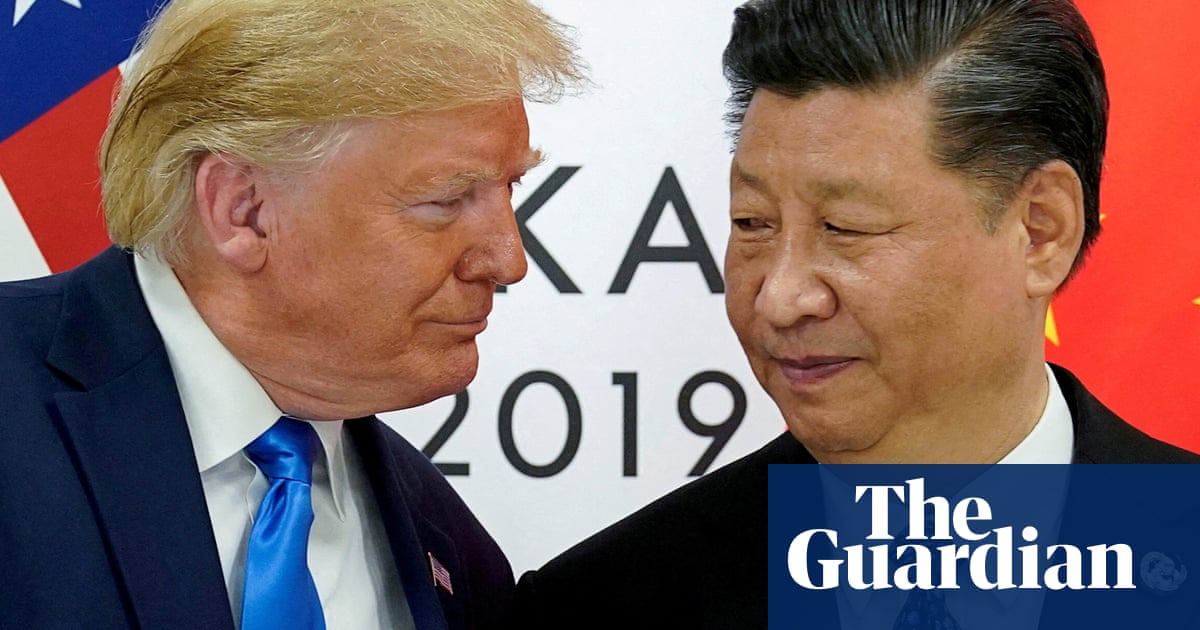Donald Trump said he had accepted an invitation to meet Xi Jinping in China after a phone conversation on trade was held between the leaders of the world’s two largest economies.
In a post on Truth Social, the US president said the “very good” call lasted about 90 minutes and the conversation was “almost entirely focused on trade”.
He wrote: “The call lasted approximately one and a half hours, and resulted in a very positive conclusion for both Countries. There should no longer be any questions respecting the complexity of Rare Earth products. Our respective teams will be meeting shortly at a location to be determined … During the conversation, President Xi graciously invited the First Lady and me to visitChina, and I reciprocated.”
Trump added that teams from the US and China would meet soon at a location to be determined.
The Chinese foreign ministry said Trump initiated the call, which was only the second time this year the two leaders had spoken one to one. They previously spoke in January, before Trump’s inauguration.
The discussion followed posts on social media by Trump that praised the Chinese leader but also suggested it was difficult to reach a deal with him.
Trade negotiations between the US and Chinastalledshortly after an agreement between the countries on 12 May to reduce 145% import tariffs on China imposed by Washington, and Beijing’s 125% tariffs on US imports in a tit-for-tat exchange.
The agreement allowed for a reduction in tariffs during a 90-day moratorium before talks to resolve differences, especially over the export of Chinese rare earth metals, which are crucial to making electric cars and mobile phones.
The US treasury secretary, Scott Bessent, the commerce secretary, Howard Lutnick, and the US trade representative, Jamieson Greer, will represent the US side in negotiations.
Trump is under pressure to resolve the dispute with China after a series of weak economic figures that showed a sharp slowdown in US growth and a reluctance among private companies to hire staff. Large US businesses have also complained about the high cost of purchasing vital goods made in China.
Sign up toBusiness Today
Get set for the working day – we'll point you to all the business news and analysis you need every morning
after newsletter promotion
The Chinese government said in a statement published by the state-run Xinhua news agency: “Xi Jinping welcomed Trump’s visit to China again, and Trump expressed his sincere gratitude.”
However, it added: “The US side should take a realistic view of the progress made and withdraw the negative measures imposed on China.”
China’s decision in April to suspend exports of a wide range of critical minerals and magnets has disrupted supplies needed by carmakers, computer chip manufacturers and military contractors around the world.
Trump has long pushed for a call or a meeting with Xi, but China has rejected the proposal as out of keeping with its traditional approach based on hammering out agreement details before the leaders talk.
